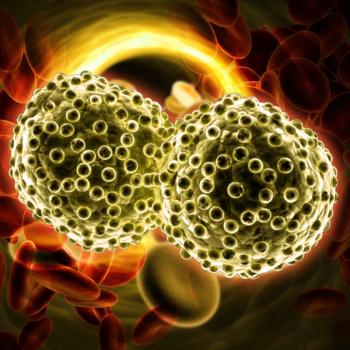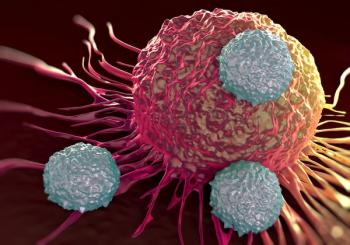Since our first "Quality of Life in Current Oncology Practice and Research" symposium was held at St. Mary Medical Center in Long Beach, California in February 1989, and published in ONCOLOGY in May 1990, there has been a marked increase in the use of quality of life measures to determine the outcomes of interventions in clinical oncology. Measuring the effects of anemia treatment with quality of life tools is a fine example of the importance of these tools to gauge the impact and clinical significance of interventions. It is, therefore, both timely and relevant that we dedicate our fifth symposium to the management of anemia in patients with cancer.
In these proceedings, just as we did back in 1990, we pursue a pragmatic approach to the subject of anemia in cancer and intend to provide practical and helpful information for practicing physicians and other oncology professionals. The authors have presented, where applicable, not only summaries of relevant scientific information, but also their personal clinical experience and approach to specific patient management problems.
We are happy to also include, as we did 12 years ago, an appendix to the proceedings listing 17 commonly used quality of life scales (see pages 189-256). It is rewarding to report that while in 1990 the proceedings were mostly dedicated to introducing the use of quality of life scales in oncology, the current proceedings demonstrate the results in the clinical arena of the application of these tools.
Incidence, Causes, and Management of Anemia in Cancer Patients
Dr. N. Simon Tchekmedyian describes national estimates with regards to the prevalence of and approach to the anemia of cancer and presents statistics obtained in a community-based oncology practice addressing these variables. The U.S. population demographics and trends in therapy indicate that anemia will continue to increase as a clinical problem in oncology.
Dr. Jerry L. Spivak addresses the very complex subject of iron metabolism, erythropoiesis regulation, and the role of cytokines in the anemia of chronic illness. His outstanding didactic discussion should be of great interest to all clinicians.
Dr. John A. Glaspy addresses various issues relating to the impact of anemia on cancer progression and prognosis as well as its implications on the efficacy of various modalities of cancer therapy. He suggests that survival outcomes should be a focus of future anemia treatment trials.
Dr. Jeffrey Crawford presents clearly and elegantly the results of the initial registration studies of erythropoietin therapy in cancer-related anemia as well as the results of three large community-based studies of erythropoietin therapy for cancer-related anemia. The striking correlation of hemoglobin improvements with measurable improvements in quality of life assessments is presented. Importantly, from a quality of life perspective, a minimum optimal hemoglobin level of 12 to 13 is proposed, given that quality of life assessments show distinct and profound declines below those levels.
Dr. Robert E. Smith and Dr. Tchekmedyian introduce their practical approach to the diagnosis and treatment of anemia, based on current data and their own personal experience.
The Burden of Symptoms
Dr. Charles S. Cleeland and Dr. Cielito C. Reyes-Gibby discuss symptom burden measures including the M.D. Anderson Symptom Inventory. The role of symptom burden as an alternative or adjunct to quality of life measures is discussed.
Dr. Glaspy discusses barriers to the use of erythropoietic therapy in cancer patients, including issues of effectiveness and convenience. He reviews darbepoetin alfa (Aranesp), a new agent with a number of characteristics that could address some of these barriers.
Erythropoietin as a Neuroprotectant
Dr. Michael L. Brines presents very exciting new information about a novel neuroprotective and neurotherapeutic role for erythropoietin. Dramatic preclinical data on reduction of ischemic central nervous system infarction effects with erythropoietin administration is introduced and the potential role of erythropoietin in the management of a host of neurological disorders is discussed. Very interesting preliminary clinical results are also presented involving stroke patients.
Dr. Nelson L’ntshotshole Jumbe expands on the neurotherapeutic potential of erythropoietic agents with a particular focus on the role of the blood brain barrier. Current research on the biodistribution of erythropoietin molecules and future directions are presented.
Anemia, Fatigue, and Functional Ability
Dr. William J. Evans presents a very interesting and helpful discussion on the effects of anemia and physical conditioning on the functional ability of cancer patients. The role of hemoglobin levels on aerobic capacity and particularly the role of exercise training in cancer patients is discussed. His article should be very useful to all who are interested in fatigue management programs and cancer rehabilitation efforts.
Dr. Joel D. Kallich et al present the results of a study probing the relationships between anemia and fatigue and psychologic variables such as anxiety and depression. As clinicians, we are well aware of the emotional burden associated with the frustration that cancer patients often feel when they are physically unable to do what was normal for them prior to their illness. It is therefore not surprising that the authors indicate that there are measurable improvements in anxiety and depression when fatigue is reversed in these patients.
Dr. David Cella discusses in detail the quality of life implications of the diagnosis of anemia as well as its effective treatment. His article discusses theoretical issues and reviews pertinent recent clinical trials addressing the subject.
Dr. Paul B. Jacobson et al discuss the assessment of quality of life in clinical research and the many practical barriers that investigators must face to properly measure quality of life outcomes. If quality of life measurements are difficult in clinical trials, introducing quality of life tools in clinical practice is even more problematic. This article is helpful to the clinician given that, even though quality of life measures generally are not applied in routine practice, the clinician needs to understand the measures and the results obtained with them to properly apply the information when and where he or she deems it appropriate.
Nursing Perspective and Possible Future Therapeutic Agents
The nursing perspective on the issue of communication with patients and strategies for managing fatigue is presented by Ms. Patricia Jakel, who draws from an extensive experience in nursing practice, teaching, and research at UCLA. Her shared speech with a cancer patient at the symposium and the direct input of this patient were exceptionally interesting and educational for all of us. This moving presentation showed us all the stark reality of an anemic cancer patient facing the challenges of daily life.
Dr. Harvey G. Klein presents an up-to-date and comprehensive review of the status of red cell substitutes in anemia management. The potential benefits and many shortcomings of these substitutes are discussed.
Management of Aplastic Anemia, Myelodysplastic Syndromes, and Hemolytic Anemias
Dr. Ronald L. Paquette presents a comprehensive, very practical, and current article on the diagnosis and management of aplastic anemia and myelodysplastic syndromes.
Dr. Kalust Ucar’s comprehensive and clinically oriented article on hemolytic anemias should be attractive to clinicians who often face hemolytic conditions, both within and outside a cancer diagnosis.
Toward Evidence-Based Treatment Guidelines
Dr. Jerome Seidenfeld et al present the results of reviews of controlled trials of erythropoietin therapy in oncology patients. The need for adequate high-quality randomized trials in order to support appropriate evidence-based guidelines is emphasized.
At the QOL symposium in March 2002, Dr. Michael Gordon (Arizona Cancer Center) presented preliminary considerations towards a definition of American Society of Hematology and American Society of Clinical Oncology guidelines. Resultant guidelines are now available online and will be available in print form October 2002. See:
http://www.bloodjournal.org/cgi/content/abstract/2002-06-1767v1
http://www.jco.org/cgi/content/abstract/JCO.2002.07.177v1
We are hopeful that these proceedings will be of interest to professionals from various disciplines. Anemia has pervasive effects, not only on patients’ quality of life, but also on the impact of various interventions, including irradiation, chemotherapy, other antineoplastic treatments, physical rehabilitation efforts, psychologic outcomes, transfusion medicine, and nursing care. Ultimately, it is our hope and desire that the presentations by the multidisciplinary team involved in this symposium will help enhance the quality of life of patients with anemia.






